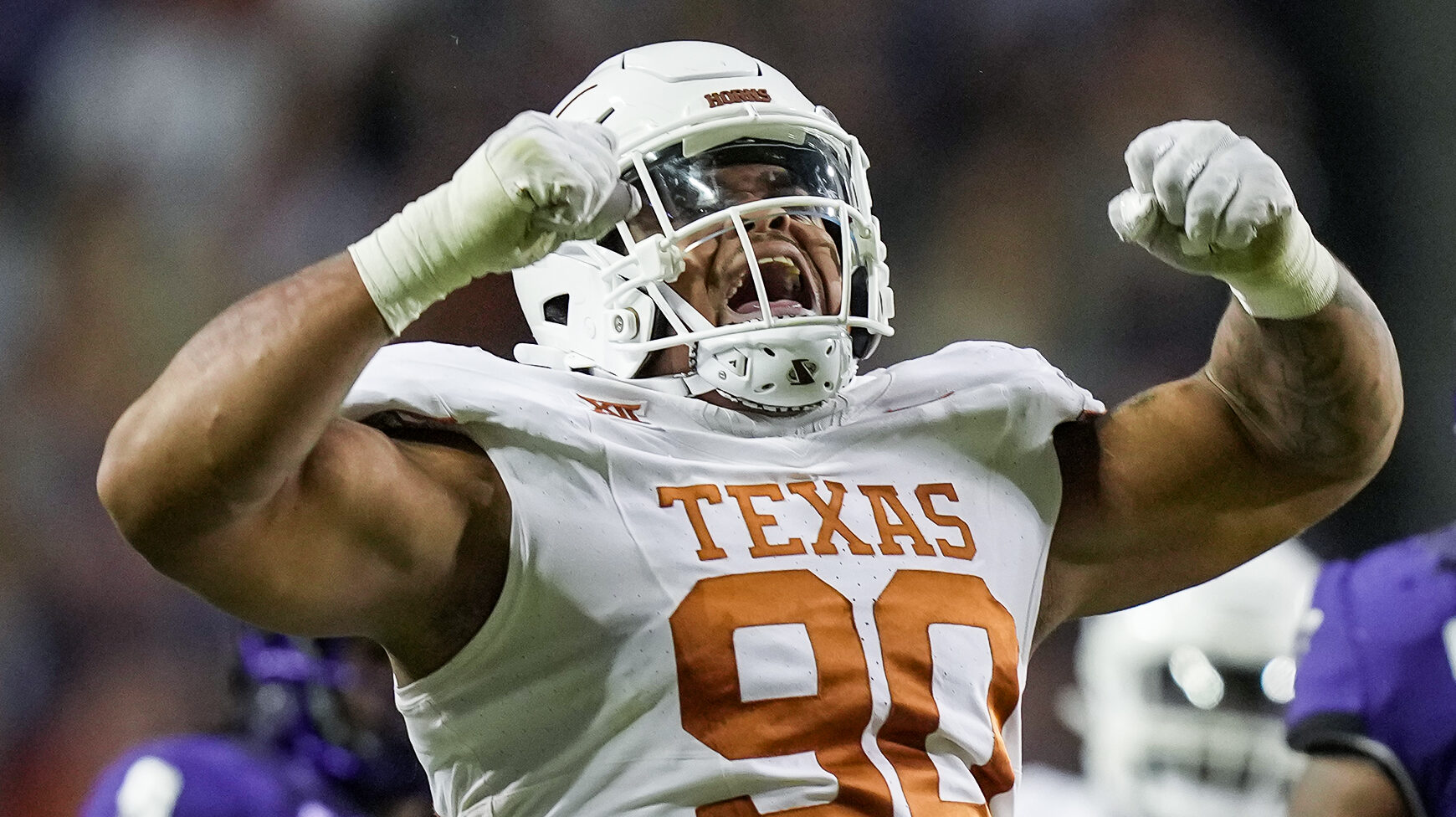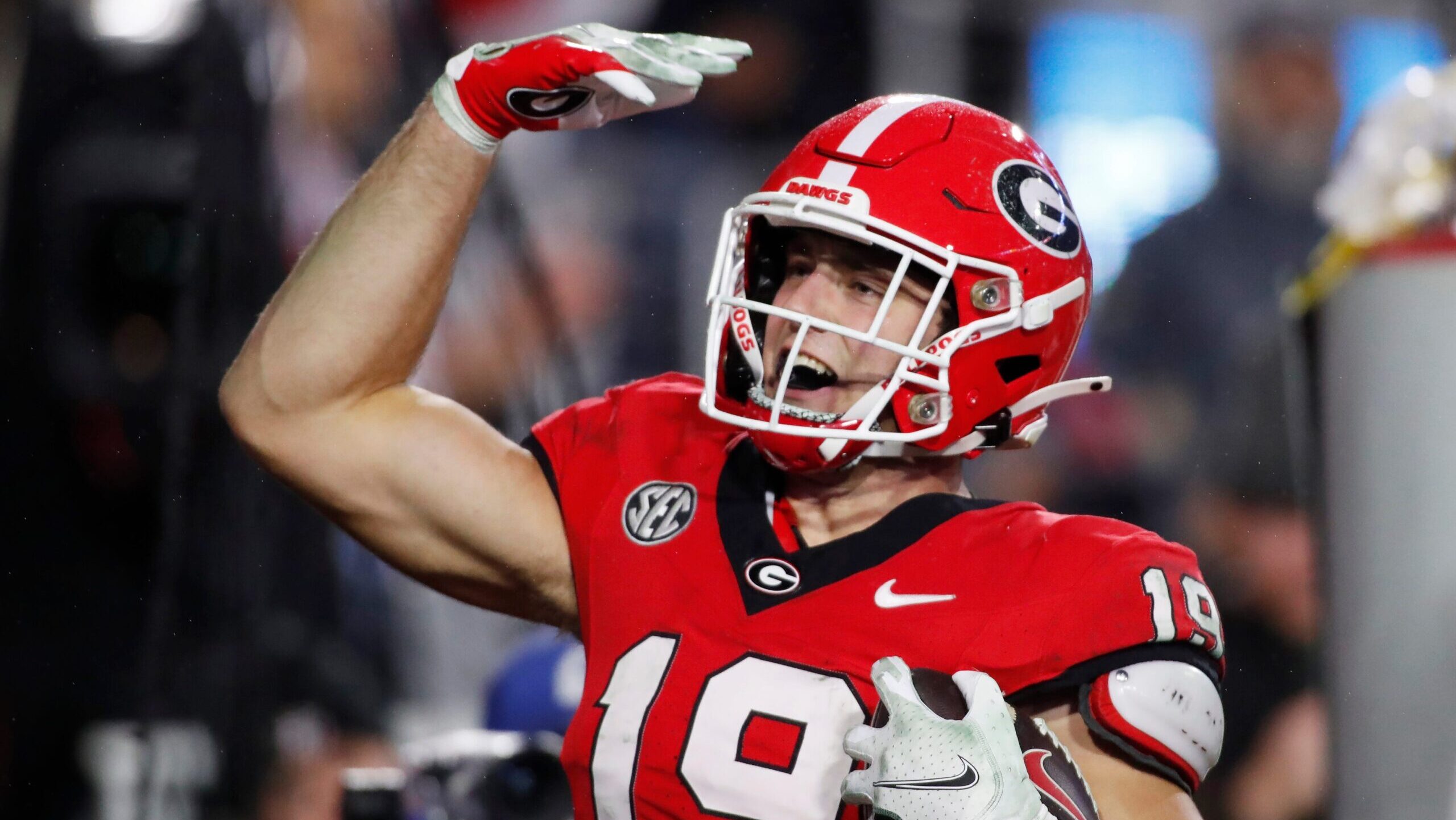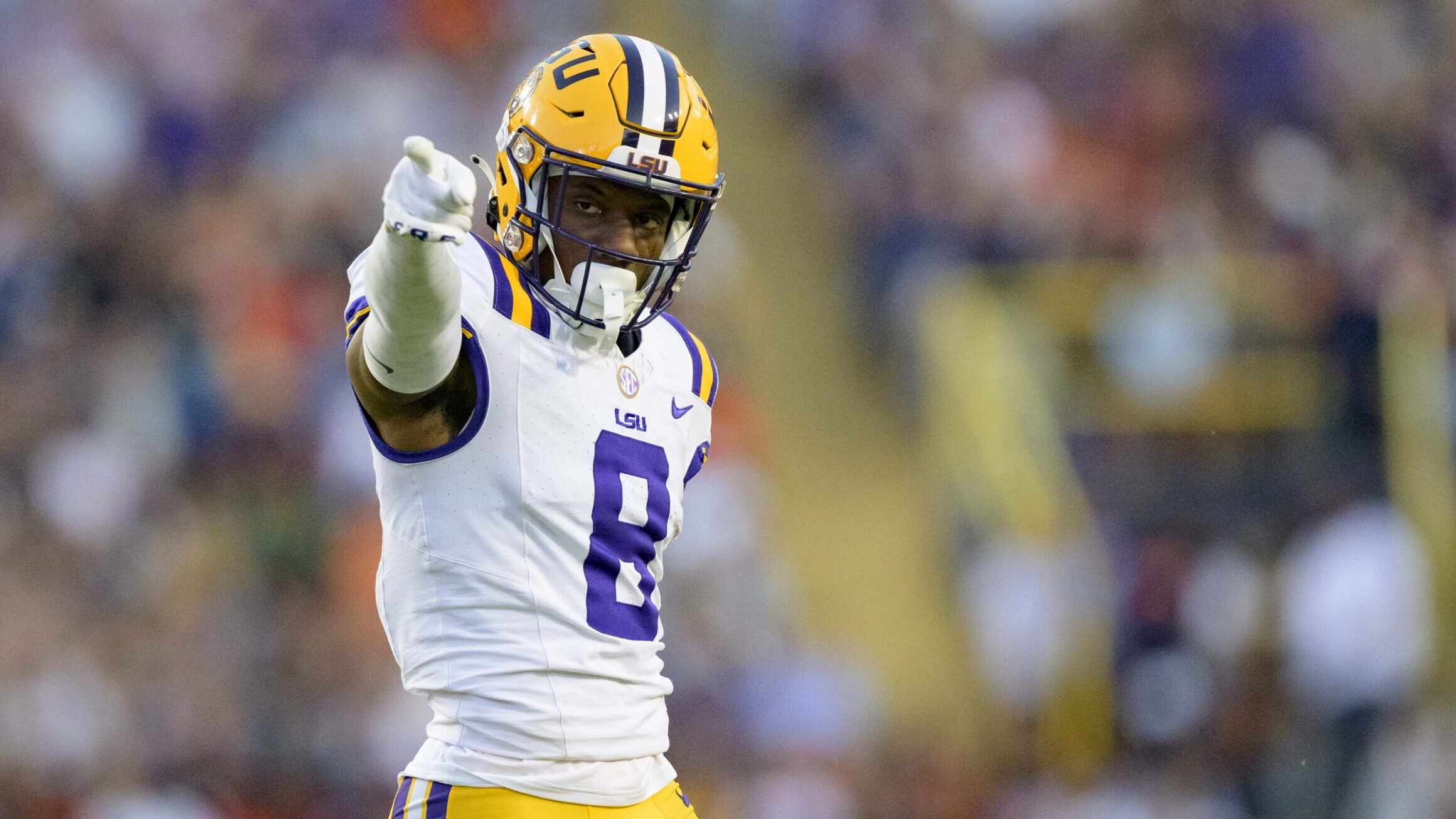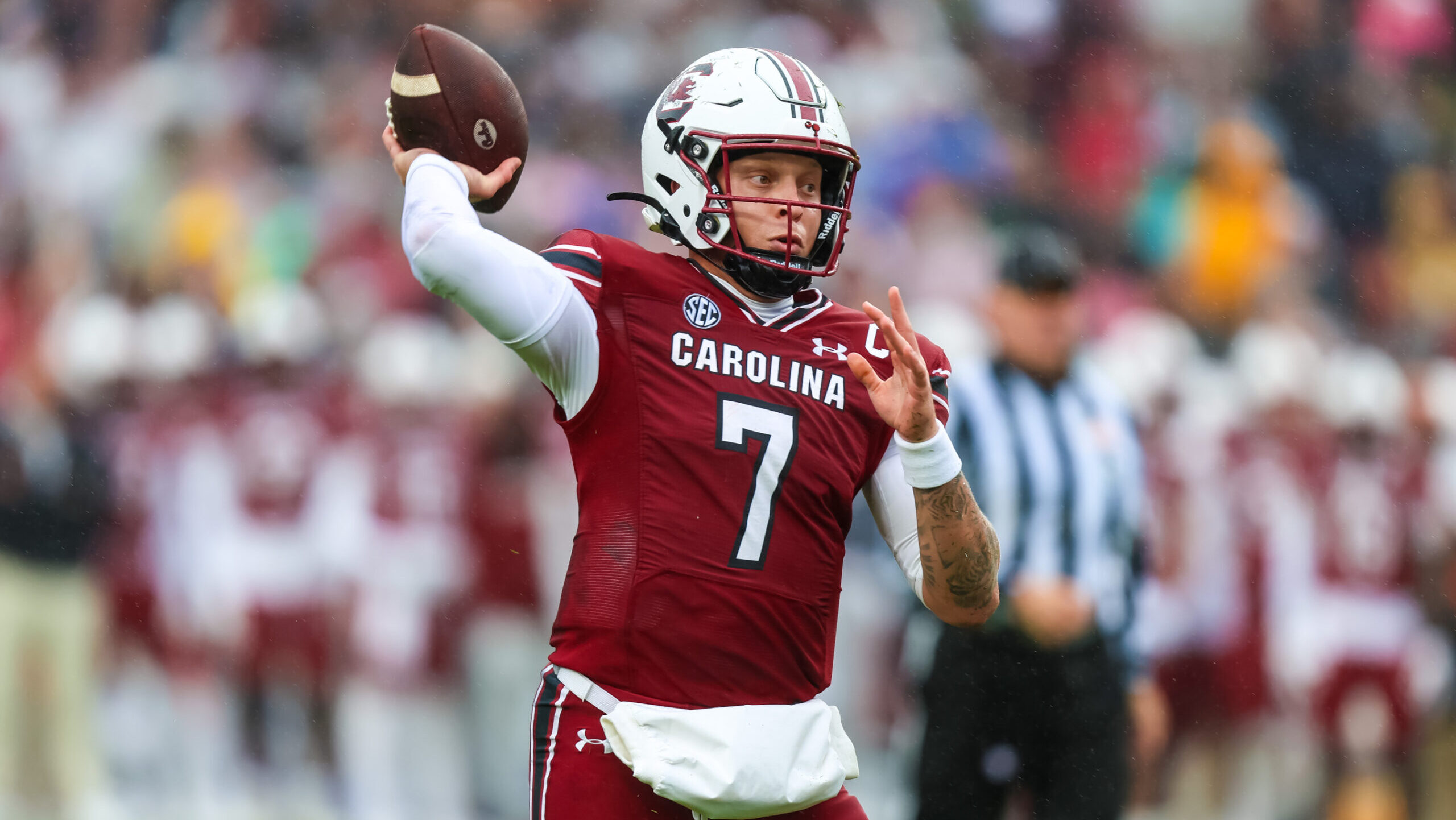Analysis
8/11/21
4 min read
The Fifth-Year Option Can Be Friend or Foe
The 2011 CBA drastically changed the way NFL rookie contracts are done. Drafted players went from having the ability to negotiate their contracts with teams to having little to no say on the length or total contract amount – all drafted players are signed to four-year contracts. They could, however, negotiate guarantees, language and payment terms, along with a few other details. This new system for rookie contracts also brought about the fifth-year option. After a player's third full season under his rookie contract, their team had the option to pick up or decline a player's fifth-year option. The fifth-year options are also fully guaranteed once picked up, making this decision all the more important for NFL front offices.
We looked at the first-round draft classes from 2011 through 2016; all first-rounders in these draft classes have at this point in their careers played through at least the first five years of their rookie contracts. We wanted to see how these players performed during the third, fourth and fifth years of their career -- and whether their team picking up their fifth-year option impacted their play.
To do this, we used Pro-Football-References approximate value (AV) metric. The AV metric is used to place a single number--which is a player’s performance score for that season--to each player, each season, to base how well they played that season. The better you play, the higher the score; the worse you play, the lower the score. For example, Aaron Donald’s 2020 season AV was 20 (tied for the highest AV that season), while Carson Wentz’s AV for the 2020 season was 4.
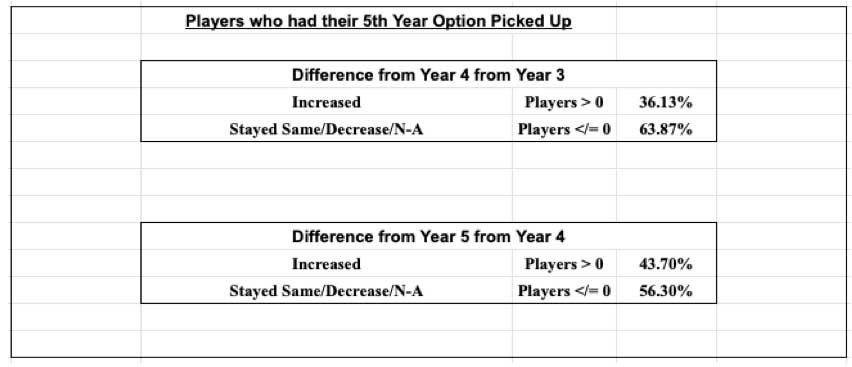
For players who had their 5th-year option picked up, 36.13% of these players had their AV increase from their third to fourth seasons. One of these players was Rams linebacker Alec Ogletree. After playing four games in 2015, Ogletree, in the fourth year of his rookie deal, set career highs in total tackles, solo tackles, QB hits and tied his career high in TFLs. The other 63.87% of the players who had their fifth-year options picked up performed the same or worse during their fourth season. Only 43.70% of these same players had their AV increase from their fourth season to their fifth.
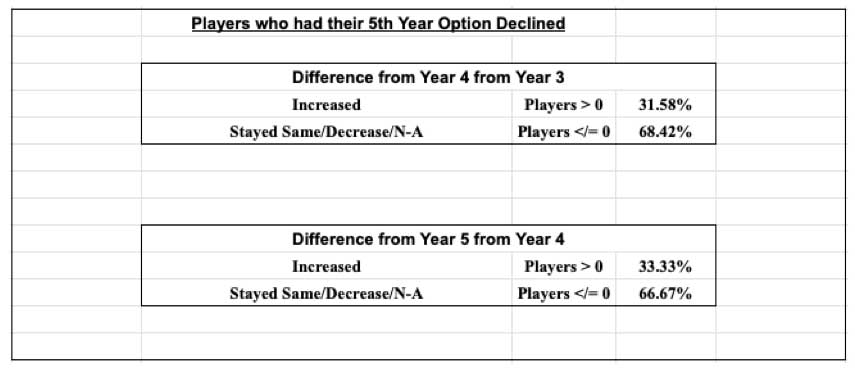
For players who had their fifth-year options declined, 68.42% of these players performed worse in their fourth season compared to their third. Eli Apple is an example of a player who played worse in his fourth season after having his fifth-year option declined the season before. A third -- 66.67% -- of players who had their fifth-year option declined had their AV decrease or stay the same following their fourth season.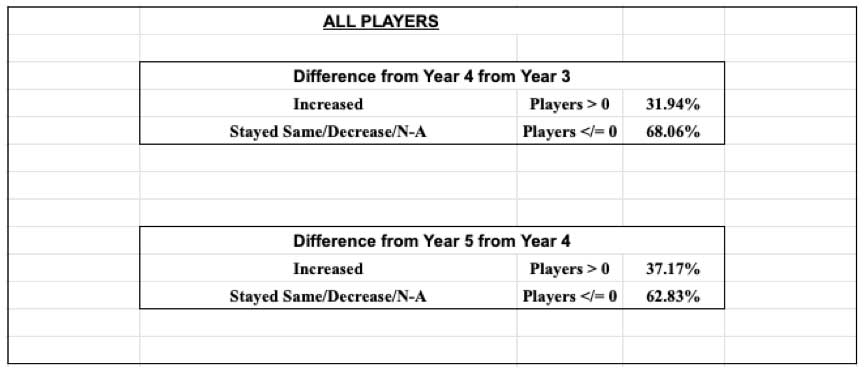 The following chart shows the combined data for first-round rookies for both those who had their fifth-year option picked up or declined.
The following chart shows the combined data for first-round rookies for both those who had their fifth-year option picked up or declined.
Not all first-round picks perform poorly in the season following their third -- fifth-year option pick-up or not -- like Doug Martin. After having his fifth-year option declined after his third season (2014), Martin had the second-best season of his career in 2015, raking up 1,402 rushing yards on a career high 4.9 yards per carry. Amari Cooper was in a similar position, except his option was picked up by the Raiders after a poor third season (2017) where he had career lows in multiple categories. Cooper started his fourth season (2018) with just 280 yards and 1 touchdown in six games. After he was dealt to the Cowboys later that season, he had 725 yards and 6 touchdowns in nine games.
Fifth-year options can be a salary cap friendly way to keep good players on a team’s roster, but they can also come with risk; failure to pick up a fifth-year option could cause a team to lose or give up on a quality player.
*NOTE: Players that missed the season due to injury or other reasons were marked as “N/A” and essentially given an AV of 0 for that season because they did not play.
References: Pro-Football-Reference


